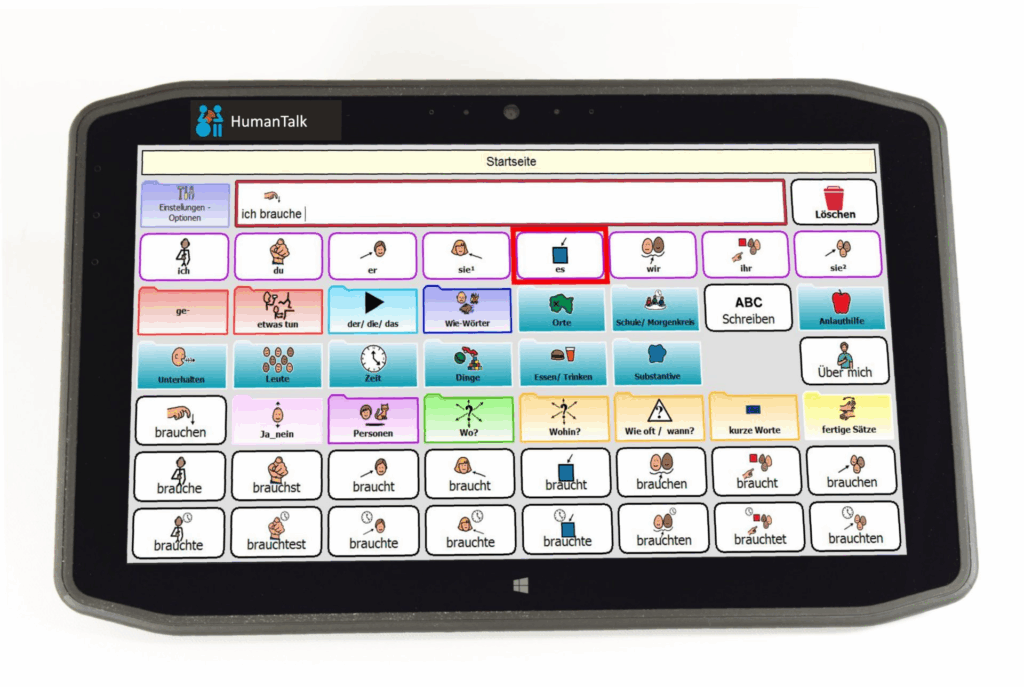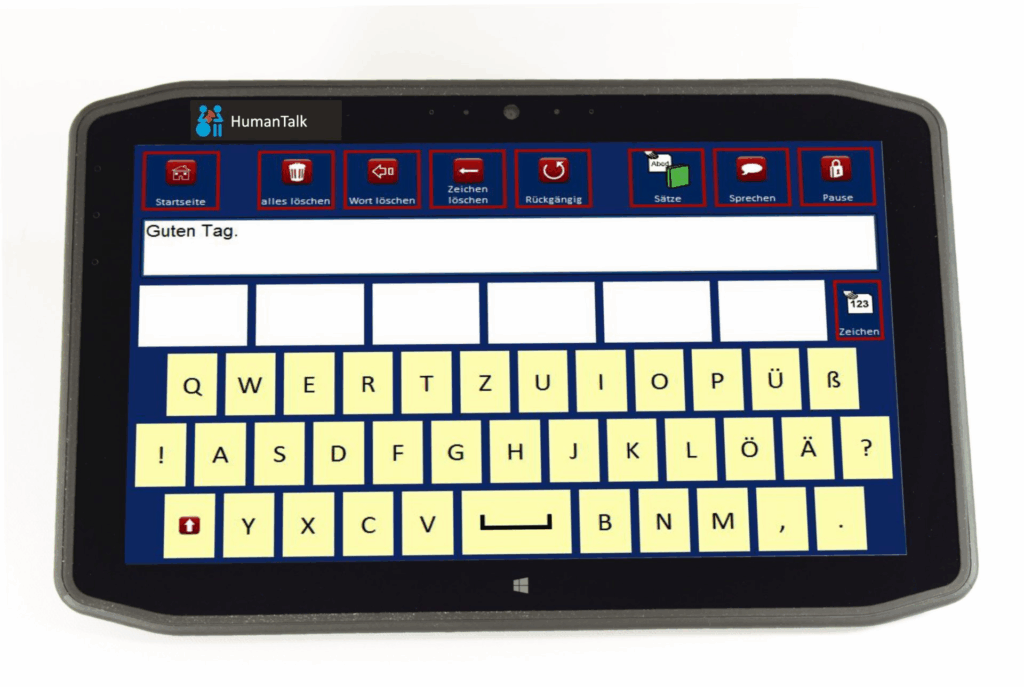

Background
Communication aids reduce limitations in speaking, writing and using the keyboard that occur due to a speech disorder or weakness of the hand muscles. Simple and user-friendly tablet computers are available to write words and sentences that can be read out loud by the communication aid, displayed or sent by e-mail. Other communication aids can be controlled with minimal movements of the arms or legs or by moving the head and eyes and can be connected to a personal computer and the Internet. Modern communication aids in conjunction with Internet use and e-mail communication make a decisive contribution to improved private, social and, in some cases, professional participation. They are tested, adapted and supplied by highly specialized assistive technology experts in collaboration with occupational therapists and neurologists.
Prerequisites
Users of a communication aid may have the following conditions:
- Amyotrophic lateral sclerosis (ALS)
- Stroke
- Multiple sclerosis
- Muscular dystrophy
- Parkinson’s disease
- Spinal cord injury
- Other diseases that affect the motor skills of speaking and writing
Users must be able to operate the communication aid safely. Observe the following criteria when providing care:
- Cognitive ability to operate a communication aid


